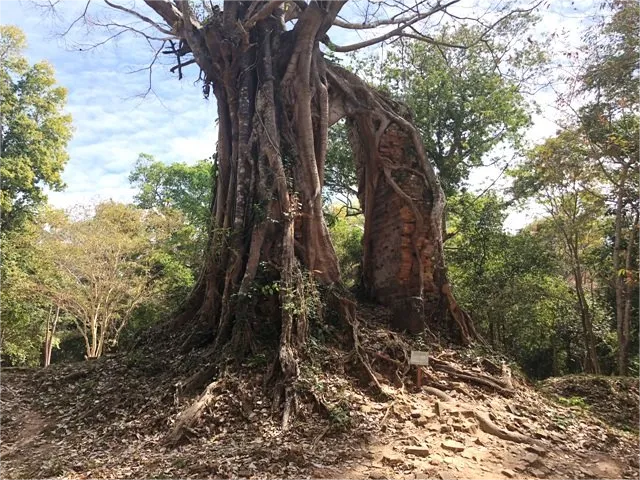Sambor Prei Kuk Cambodia – Where Trees Devour Temples
- by Mohamed Adam

Journeying down the Cambodian motorway towards Phnom Penh from Siem Reap, a sudden turn off the main motorway, stage left, leads to a unique archeological park. Sambor Prei Kuk, meaning ‘the temple in the richness of the forest’, contains three cluster areas Central (C), North (N), South (S) where trees relentlessy encase temples. The quiet forested area is a Cambodian gem in the woods.
The entire area, known in ancient times as Ishanapura, was the location of the capital city of the Chenla Kingdom that prospered in the late 6th and 7thcenturies, well before the Khmer empire.
A walled area covering some 1,000 acres originally contained approximately 150 temples of which only 16 remain fully intact. Located 180 km southeast of Siem Reap and 200 km north of Phnom Penh, this site dates back to the 7th century, hundreds of years before the Angkor region flourished.
With modest tourist infrastructure and support staffing, Sambor Prei Kuk is one of the newest UNESCO World Heritage Sites; being officially designated on July 8, 2017. The site is relatively unknown compared to the vastly more popular Angkor region, and the crowds are for now minimal but growing. Lesser known destinations in Cambodia are drawing more attention as Siem Riep and PhnomPenh overflow with tourists.
The temples and structures can be visited through a network of dirt foot paths through the forest. Structures reveal themselves frequently, displaying intricate designs and symbolism of the Shaivism religion – a blend of Hinduism, Buddhism and original native beliefs.
Amazing how trees could take hold on the top or side of structures with roots penetrating cracks between bricks or stone, then grow to such an extent that the trees eventually envelop the structures, creating fascinating and slightly eerie scenes of almost symbiotic relationships.

The Daem Chrei Temple (shown below) has been thoroughly encased by a tree resulting in a ‘Sleepy Hollow’ appearance, and one could almost expect the headless horseman to charge out from beneath the tree at any given moment.
And if the thought of temple devouring trees isn’t distracting enough, in the midst of walking through the peaceful forest, a large depression just off the path was pointed out as a bomb crater. It is a sobering realization that this area was a target of the secret American mass bombing raids only 45 years ago.
Scars of the Vietnam War on Sambor Prei Kuk
The bombing, so deep into Cambodia, was meant to disrupt the North Vietnamese and Khmer Rouge supply routes during the Vietnam War. In addition, this area was heavily mined by the Khmer Rouge guerillas that were in the midst of a civil war in the early 1970s.
The mines were only fully cleared in 2008, however it is still recommended (throughout Cambodia) to stay on marked paths.
It will be interesting to learn how this archeological park evolves as it becomes better known. This may be one of those places where one says in the future “I’m glad I saw it 20 years ago”.
Journeying down the Cambodian motorway towards Phnom Penh from Siem Reap, a sudden turn off the main motorway, stage left, leads to a unique archeological park. Sambor Prei Kuk, meaning ‘the temple in the richness of the forest’, contains three cluster areas Central (C), North (N), South (S) where trees relentlessy encase temples. The quiet…




